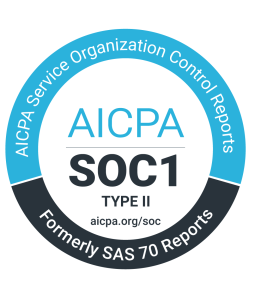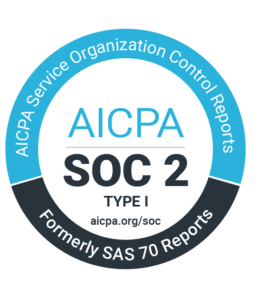
Introduction
California is one of the most progressive states in the country when it comes to cannabis. As such, it’s no surprise that there are a lot of changes coming down the pipeline for cannabis delivery in California. If you’re looking to start or expand your delivery business, here’s what you need to know:
California Cannabis Delivery License
California’s Bureau of Cannabis Control has issued a number of cannabis delivery licenses to companies in the state. The licensing process is fairly straightforward, with an application fee of $8,000 and annual renewal fees starting at $3,750. Applicants must also submit an organizational chart and proof that they have at least $100,000 in capital before being granted a license. In addition to basic information such as your business name and contact information, you’ll need to provide detailed descriptions of all products that will be sold, the layout of the dispatch facility, and the delivery software you use to run operations.
Cannabis Delivery Logistics
The first step is to make sure you have the proper licenses and permits from your state’s Bureau of Cannabis Control, including an insurance policy that covers all employees who will be handling marijuana products as part of their job duties. This ensures that your business has the coverage it needs in case something goes wrong while delivering cannabis products, such as an accident or injury due to improper handling by staff members.
The logistics of cannabis delivery can be tricky, but technology can help you manage your inventory, your fleet, and your online orders. There are three types of cannabis delivery.
-
Ice Cream Truck Delivery
-
Pizza-Style Delivery
-
Hybrid Cannabis Delivery (mix of both)
Ice cream truck delivery is sometimes also referred to as dynamic or on-demand delivery. This delivery method provides drivers with kits of inventory that they use to fulfill orders on the go. They simply use a cannabis delivery mobile app, like BLAZE Delivery, to scan the product barcodes with their smartphone camera. This way, drivers can build orders for customers in their assigned delivery area.
Pizza-style cannabis delivery, also known as hub-style delivery, assigns orders that have already been placed to a specific driver. Drivers deliver the pre-ordered products and return to the hub once all the orders have been delivered.
The hybrid cannabis delivery model uses a mix of both ice cream truck style and pizza style delivery. Drivers carry some onboard inventory for on-demand orders but deliver to customers that have already placed an order.
California Cannabis Delivery Drivers
A California cannabis delivery driver is required to have a Delivery Driver’s License (DDS). This license allows them to deliver medical marijuana, adult-use marijuana and hemp products. The DDS is available through the State of California Bureau of Cannabis Control and requires that you pass an exam, submit fingerprints, provide proof of your identity and residency, pay fees and complete an application process.
After you receive your Delivery Driver License (DDS), you will need fleet management software that includes GPS tracking devices installed in each vehicle used for deliveries so dispatch can monitor where each vehicle is at all times during its shift.
New Regulations for Cannabis Delivery
The BCC has increased the allowable amount of inventory that can be inside the delivery vehicle at any one time from $5000 to $10000. This increase presents a great opportunity for cannabis delivery services to reduce expenses and deliver more orders before restocking inventory. Additionally, all the onboard inventory can be unordered, giving ice cream truck delivery services a huge advantage.
Another update for California cannabis delivery services beginning April 1st, 2023 is the delivery inventory ledger. Cannabis delivery services must create a delivery inventory ledger in California Cannabis Track and Trace system for each delivery trip. This inventory ledger must be created before a delivery driver leaves the licensed retail premises to deliver the order.
CCTT will alert users to enter the information required to create a delivery inventory ledger. Specifically, CCTT will prompt users to enter:
The delivery employee’s name, employee ID, and driver’s license number.
The delivery vehicle’s make, model, and license plate number.
The UID(s) assigned to those cannabis products and the number of units associated with each UID on the delivery inventory ledger. The item name and category of each cannabis product to be carried on the delivery trip will automatically be associated with each UID.
The UID(s) of any cannabis product ordered by customers and processed by the licensed retailer prior to the delivery employee leaving the licensed retail premises.
After the required information is entered, CCTT will generate an electronic delivery inventory ledger containing that information. Following each delivery, the delivery inventory ledger must be updated to show the current inventory in the delivery vehicle.
Cannabis delivery drivers must be able to provide the delivery inventory ledger to any law enforcement officer upon request.
Another major change for California cannabis delivery services is the taxes they are required to pay. Starting January 1, 2023, delivery services will be responsible for collecting and paying the California cannabis excise tax.
Delivery services may be eligible to obtain a tax credit for the excise tax paid to distributors for products sold on or after January 1, 2023. In order to obtain this credit, retailers must provide evidence that the cannabis was not only purchased prior to January 1, 2023, but also provide evidence that the retail sale occurred after January 1, 2023, and that the excise tax was paid to a distributor.
It’s critical for California cannabis delivery services to be aware of these changes. Fortunately, technology can help retailers remain compliant by automating reports, auto-applying taxes, and tracking delivery inventory value. BLAZE Delivery is a comprehensive solution to all of the new regulation changes for California delivery services in 2023.
Conclusion
It is clear that cannabis delivery in California is here to stay. The industry has grown so much over the last few years and will continue to do so as more and more states legalize marijuana. With that being said, it is important for people who are looking into starting a cannabis delivery business or those who already have one to know what they need to do in order to keep up with regulations set forth by the state government. Make sure the technology provider you select to run your delivery service keeps you compliant while also simplifying your delivery logistics.



